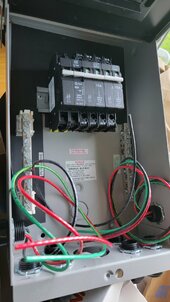robbob2112
Doing more research, mosty harmless
OH,
one other thing on bending - if you are having trouble even after practicing your bends and the tubing kinks or collapses you can fill it totally full with sand and tape the ends shut. Then when you bend it the tube can't collapse. This also works with large gentle bends as well.
I've used the method without a bender in a pinch you just can't go as tight a radius as with a bender.
one other thing on bending - if you are having trouble even after practicing your bends and the tubing kinks or collapses you can fill it totally full with sand and tape the ends shut. Then when you bend it the tube can't collapse. This also works with large gentle bends as well.
I've used the method without a bender in a pinch you just can't go as tight a radius as with a bender.





